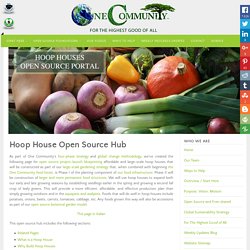

Large-scale Soil Amendment: Surveying. This page is the large-scale soil amendment strategy page.

It covers soil amendment for improving 3 acres of low-quality soil, enough space to grow sufficient food to feed 100 people within 1 year. As we arrive on the property and start preparing it, this page will evolve with open source videos, updated labor investment details, cost analysis details, and all other specifics needed to duplicate our efforts.
It contains the following sections: RELATED PAGES (click individual icons for complete pages) The One Community soil amendment strategy from our horticulturalist and botanist prepares a property of below-average soil to become a successful growing environment. Ideally, the initial soil amendment and property preparation team will begin with 15-18 people including 2 permaculturalists, a general contractor, an architect, a civil engineer, a survey team, a soil scientist, a hydrologist, a botanist, and a horticulturalist. Composting The next key ingredient is oxygen. Hoop House Open Source Hub. As part of One Community’s four-phase strategy and global change methodology, we’ve created the following page for open source project-launch blueprinting affordable and large-scale hoop houses that will be constructed as part of our large-scale gardening strategy that, when combined with beginning the One Community food forest, is Phase I of the planting component of our food infrastructure.

Phase II will be construction of larger and more permanent food structures. We will use hoop houses to expand both our early and late growing seasons by establishing seedlings earlier in the spring and growing a second fall crop of leafy greens. This will provide a more efficient, affordable, and effective production plan than simply growing outdoors and in the aquapinis and walipinis. Foods that will do well in hoop houses include potatoes, onions, beets, carrots, tomatoes, cabbage, etc. Any foods grown this way will also be accessions as part of our open source botanical garden model. Food Forest Open Source Hub. Intentional earth stewardship by creating an abundant and productive food forest is, in our opinion, essential to comprehensive food sustainability and self-sufficiency.

It is also foundational to regenerating our planet and One Community’s Highest Good of All philosophy. For this reason, we are including teaching, demonstrating, and open source sharing food forest creation and development as key components of our open source botanical garden, Highest Good food infrastructure, and model for self-replicating and self-sufficient teacher/demonstration communities, villages, and cities to be built around the world.
As a species we have the ability to truly live in harmony and mutual support with nature and One Community will be an ongoing demonstration of exactly how personally and globally beneficial this can be. This page includes the following sections: A food forest is, as the name implies, a forest of food. Here’s a 7-minute video showing 7 years of growth: (Bb) = BAMBOO (Tp) = TROPICALS. Walipini and Aquapini Planting and Harvesting Open Source Details for Duplication. Please: Open Source Project-launch Blueprinting Tropical Atrium Portal. Growtestdotorg.files.wordpress.com/2013/01/undergroundgreenhouse.pdf.